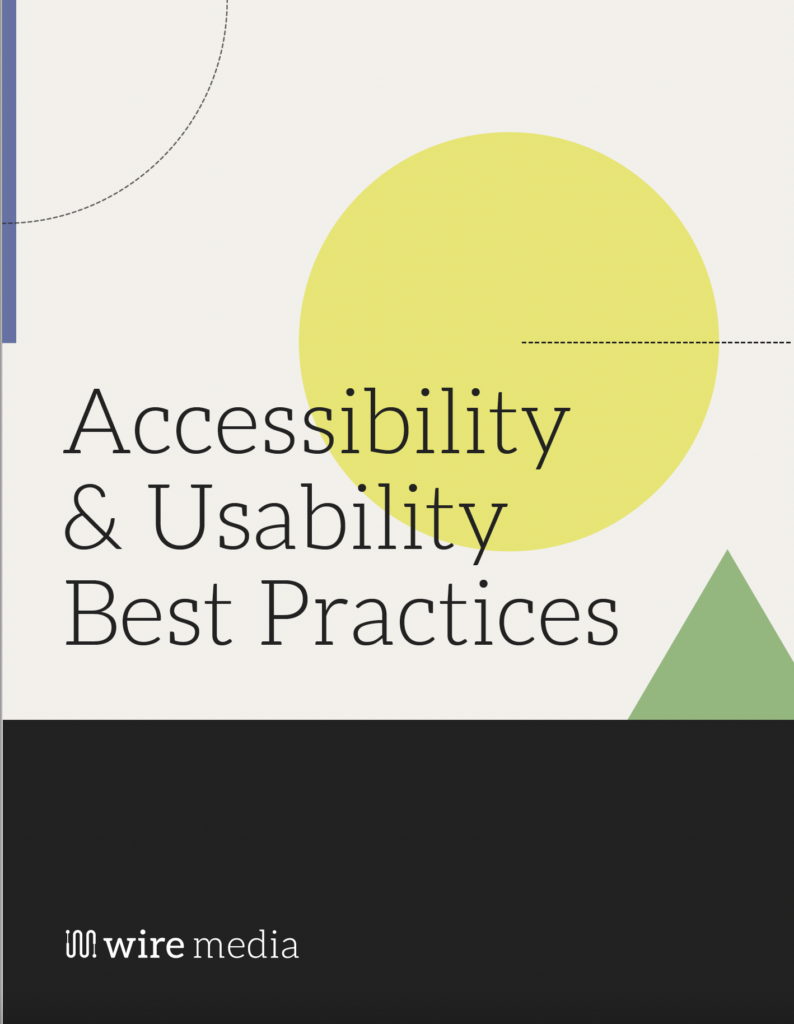
Creating an accessible website is more than just good practice; it’s a must-do for any nonprofit that wants to serve its community effectively. An accessible website ensures that people of all abilities can access your content. To help you get started or refine your web accessibility efforts, here are some top resource books every nonprofit professional should have in their organization’s library. These books offer real-world examples and expert advice to make your website inclusive for all.

Get our guide on how to start making your website available to everyone.
Get the GuideHaving these books in your nonprofit’s library is more than merely collecting resources. It’s about empowering your team to create a website that serves everyone.
1.”Don’t Make Me Think, Revisited: A Common Sense Approach to Web Usability” by Steve Krug
Steve Krug’s classic book is a must-read for anyone involved in web design. While it’s not solely focused on accessibility, the principles of usability are closely tied to making websites accessible. Krug’s easy-to-understand approach helps you think about how users interact with your website. By making your site intuitive and easy to navigate, you’re already taking steps toward greater accessibility. This book is like a handbook on how to develop a user-friendly experience that everyone can enjoy.
Usability is at the core of accessibility. If your site is hard to use, it’s not accessible. This book will help you see your website from the user’s perspective, which is crucial for creating an inclusive online presence.
2. “A Web for Everyone: Designing Accessible User Experiences” by Sarah Horton and Whitney Quesenbery
This book dives deep into the world of web accessibility. Horton and Quesenbery cover everything from understanding your audience to implementing accessible design. What makes this book special is its focus on creating a web experience that works for everyone. The authors share practical advice on making your website accessible, with real-life examples and case studies that show the impact of inclusive design.
Nonprofits serve diverse communities, including people with disabilities. This book gives you the tools to ensure your website meets the needs of all your users, making your mission more impactful.
3. “Designing for Accessibility” by Simeon Keates
Simeon Keates’ book is a comprehensive guide to understanding the principles of accessible design. It covers a wide range of disabilities and how they affect web use. Keates provides practical tips on how to design websites that accommodate different needs, from visual impairments to cognitive challenges.
This book is a great resource for nonprofit professionals who want to ensure their website is truly accessible to all. It offers insights into the specific challenges faced by people with disabilities and how to address them.
4. “Practical Web Inclusion and Accessibility” by Ashley Firth
Ashley Firth’s book is a hands-on guide to making websites accessible. It covers everything from the basics of accessibility to advanced topics like testing and evaluation. Firth provides practical advice on how to implement accessibility features and measure their effectiveness.
This book is an excellent resource for nonprofit professionals who want to go beyond theory and put accessibility into practice. It offers clear, actionable steps that can be applied to your website immediately.
5. “Pro HTML5 Accessibility” by Joshue O Connor
Joshue O Connor’s book focuses on the technical side of web accessibility. It’s packed with information on how to use HTML5 to create accessible websites. O Connor covers everything from semantic HTML to ARIA roles, providing detailed guidance on how to code for accessibility.
For nonprofits that have a web developer on staff, this book is a must-have. It’s a technical resource that can help your team implement accessibility features correctly and efficiently.
6. “The Web Accessibility Project: A Guide to Creating Accessible Websites” by Jim Thatcher and Andrew Kirkpatrick
This comprehensive guide covers all aspects of web accessibility, from understanding the basics to advanced topics like testing and compliance. Thatcher and Kirkpatrick provide a step-by-step approach to creating accessible websites, with plenty of examples and best practices.
This book is a great resource for nonprofit professionals who are serious about making their website accessible. It covers everything you need to know, making it a one-stop-shop for all things accessibility.
Final Word
Investing in these resource books is an investment in your nonprofit’s future. These books offer thoughtful insights and easy-to-follow advice to help you create an accessible, inclusive, and user-friendly website. By making your website accessible, you’re not just meeting legal requirements — you’re ensuring your organization can reach and serve everyone in your community. So, add these books to your library and start making your website a welcoming place for all visitors.